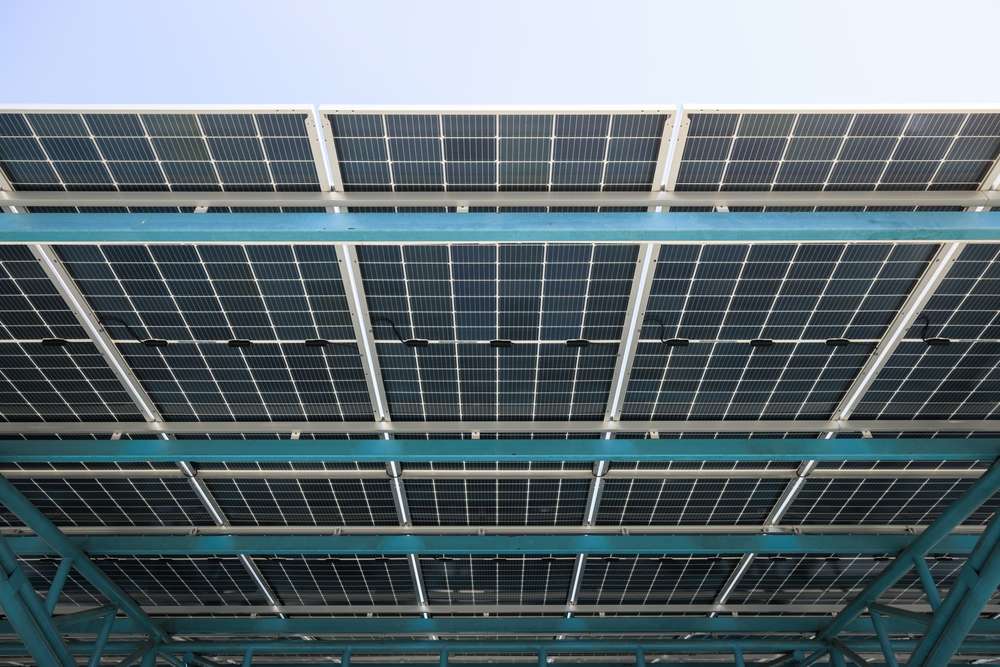Exploring Solar Panels: A Renewable Option for Homes and Businesses
Solar power has emerged as a viable renewable energy solution for both residential and commercial applications. As climate concerns grow and energy prices fluctuate, many property owners are considering solar panels as an alternative to conventional electricity sources. This sustainable technology harnesses the sun's energy and converts it into usable electricity, offering environmental benefits while potentially reducing long-term energy costs for homes and businesses across India.

How Solar Panels Work
Solar panels convert sunlight into electricity through photovoltaic cells, which are made of semiconductor materials like silicon. When sunlight hits these cells, it excites electrons, creating an electric current. This direct current (DC) electricity is then converted into alternating current (AC) by an inverter, making it suitable for household and commercial use. The system typically includes solar panels, an inverter, a mounting structure, and sometimes battery storage for excess energy. During daylight hours, panels generate electricity that can power appliances, lighting, and other electrical devices. Any surplus energy can either be stored in batteries or fed back into the grid, depending on the setup and local regulations. The efficiency of solar panels depends on factors such as panel quality, sunlight exposure, angle of installation, and weather conditions.
Factors to Consider Before Installation
Before installing solar panels, several important factors require careful evaluation. The location and orientation of the installation site significantly impact energy generation, with south-facing roofs in the Northern Hemisphere typically receiving optimal sunlight. The structural integrity of the roof must be assessed to ensure it can support the weight of the panels and mounting equipment. Local climate patterns, including average sunshine hours and seasonal variations, affect overall system performance. Available roof space determines the number of panels that can be installed and consequently the amount of electricity generated. Regulatory requirements, including permits, grid connection approvals, and compliance with building codes, vary by region and must be addressed. The quality and warranty of equipment, installer credentials, and after-sales service should also be thoroughly researched. Additionally, understanding the maintenance requirements and expected lifespan of the system helps in long-term planning.
Solar Panels vs. Conventional Power
Comparing solar panels with conventional power sources reveals distinct differences in sustainability, cost structure, and environmental impact. Conventional electricity typically comes from coal, natural gas, or hydroelectric plants, relying on finite resources or large-scale infrastructure. Solar energy, being renewable, produces no direct emissions during operation and reduces carbon footprint. While conventional power involves ongoing fuel costs and is subject to price fluctuations, solar systems require an upfront investment but offer reduced or eliminated electricity bills over time. Grid electricity provides consistent power regardless of weather, whereas solar generation depends on sunlight availability, though battery storage can mitigate this limitation. Maintenance for solar systems is generally minimal compared to conventional power plants. The reliability of grid electricity is well-established, but solar installations offer energy independence and protection against power outages when paired with battery backup. Environmental considerations favor solar energy due to its clean operation and contribution to reducing greenhouse gas emissions.
Cost Considerations for Solar Panel Installation
The financial aspect of solar panel installation involves multiple components that vary based on system size, equipment quality, and location. Initial costs include solar panels, inverters, mounting hardware, wiring, and installation labor. In India, a typical residential solar system ranging from 3 kW to 5 kW may cost between ₹1,80,000 to ₹3,50,000, though prices fluctuate based on technology and supplier. Commercial installations with larger capacity naturally incur higher expenses but benefit from economies of scale. Government subsidies and incentives can significantly reduce the net cost, with schemes offering up to 40% subsidy for residential systems in some cases. Financing options, including loans and leasing arrangements, make solar adoption more accessible. The payback period, typically ranging from 5 to 8 years, depends on electricity consumption, local tariff rates, and system efficiency. Long-term savings accumulate through reduced electricity bills, with solar panels generally lasting 25 years or more. Maintenance costs are relatively low, primarily involving periodic cleaning and occasional component replacement.
| System Capacity | Estimated Cost Range | Potential Monthly Savings | Payback Period |
|---|---|---|---|
| 1 kW | ₹60,000 - ₹80,000 | ₹800 - ₹1,200 | 6-8 years |
| 3 kW | ₹1,80,000 - ₹2,40,000 | ₹2,400 - ₹3,600 | 5-7 years |
| 5 kW | ₹3,00,000 - ₹3,50,000 | ₹4,000 - ₹6,000 | 5-7 years |
| 10 kW (Commercial) | ₹5,50,000 - ₹7,00,000 | ₹8,000 - ₹12,000 | 4-6 years |
Prices, rates, or cost estimates mentioned in this article are based on the latest available information but may change over time. Independent research is advised before making financial decisions.
Key Takeaway
Solar panels represent a viable renewable energy solution for both residential and commercial applications, offering environmental benefits and long-term financial savings. Understanding the technology, evaluating installation factors, comparing alternatives, and analyzing costs are essential steps in the decision-making process. While the initial investment may seem substantial, government incentives, declining equipment prices, and ongoing electricity savings make solar energy increasingly attractive. The system’s performance depends on proper planning, quality equipment, and professional installation. As technology continues to advance and awareness grows, solar panels are becoming a practical choice for those seeking energy independence and sustainability. Careful consideration of individual circumstances, including location, energy needs, and budget, ensures that the transition to solar power aligns with specific goals and expectations. With proper research and planning, solar energy can provide reliable, clean electricity for decades.




